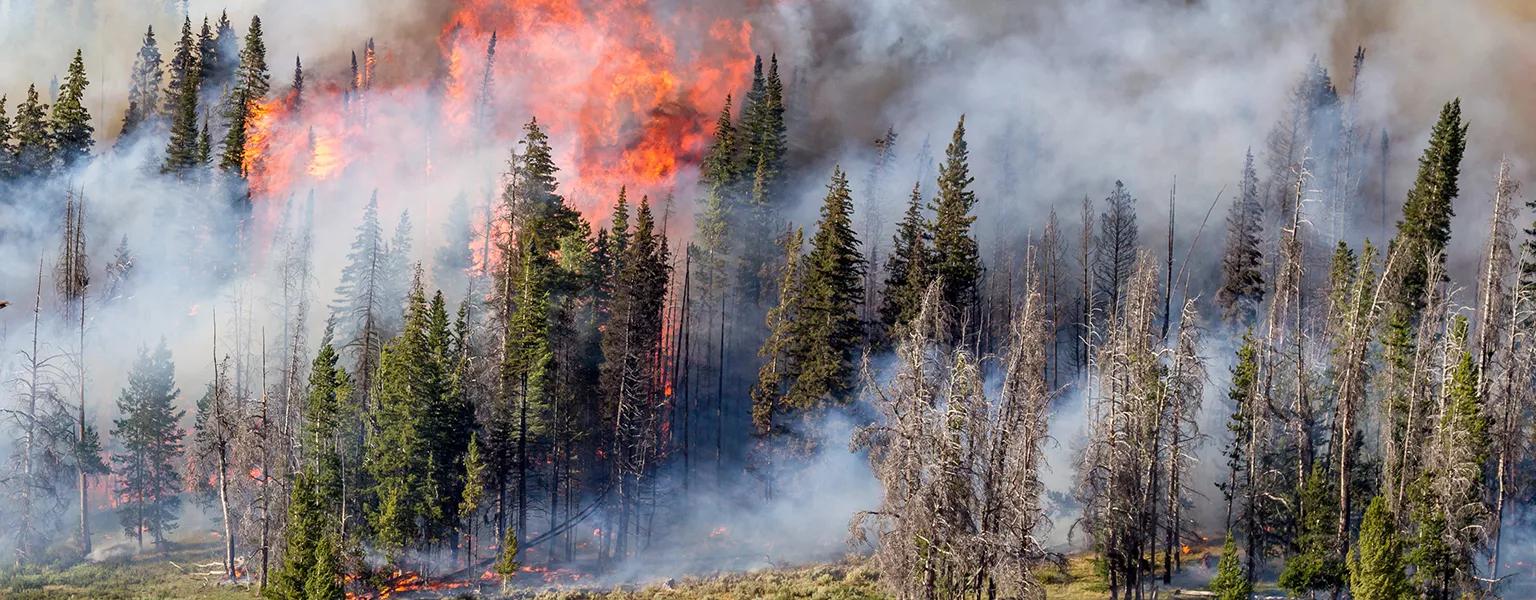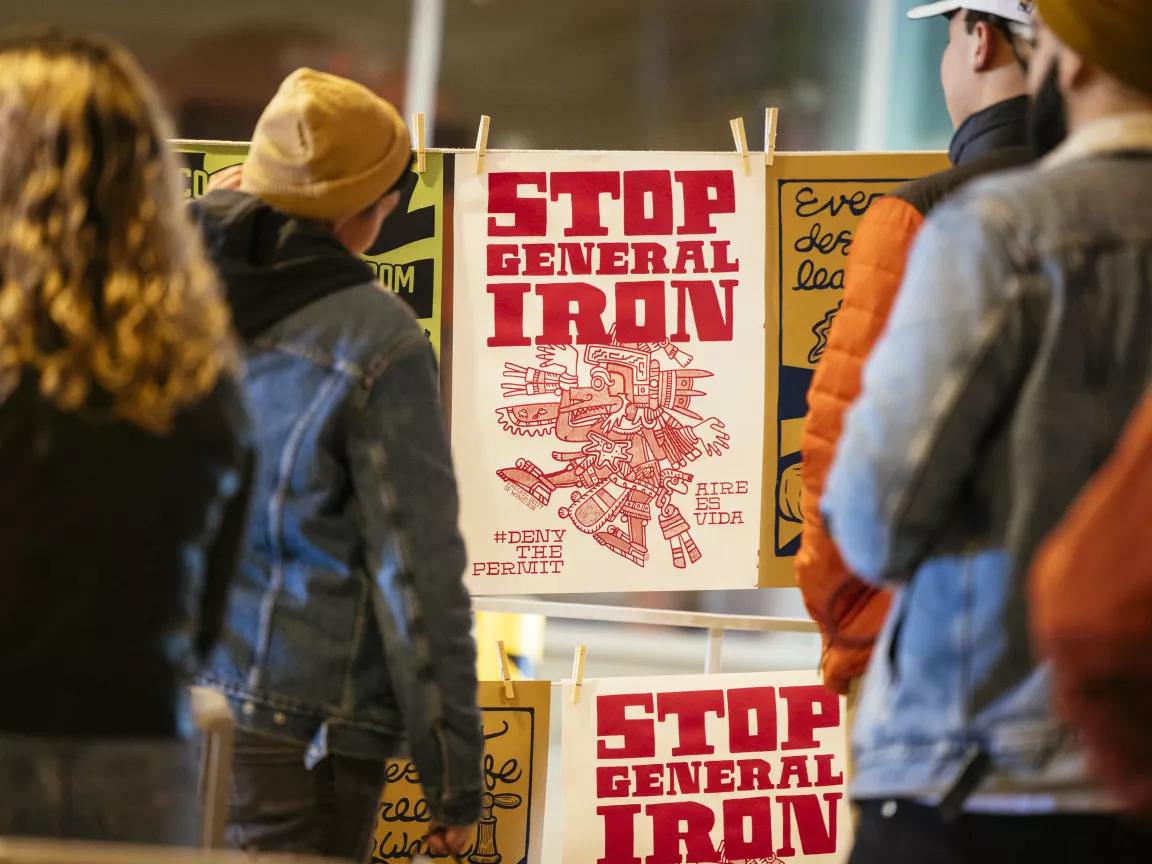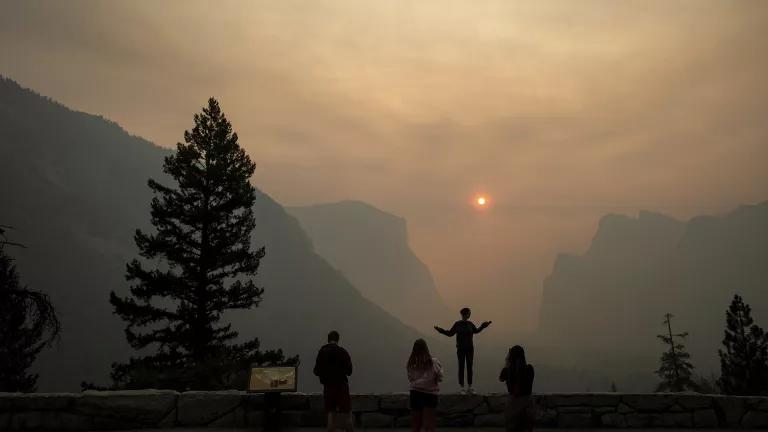
Overview
Clean air, as the United Nations has established, is a human right. Around the globe, however, the right to breathe clean air is routinely trampled by polluting industries. And our continued burning of fossil fuels only makes matters worse. Currently, 9 out of 10 people breathe air that exceeds the World Health Organization's guideline limits for pollution; every year, air pollution leads to nearly 7 million deaths worldwide, concentrated in low- and middle-income countries. Curbing it is therefore both critical for our climate and public health—and a clarion call for speeding up our transition toward clean, renewable energy for everyone.
Solutions
Ensuring that our air is safe to breathe has been integral to NRDC’s mission since the organization’s founding in 1970—the same year that the Clean Air Act was passed. More than 50 years later, we’re still fighting. Here are our current priorities.
Tighten national limits for soot, smog, and other toxic air pollutants
We’re pressing to strengthen federal tools for mitigating deadly particulate matter, ozone, and air toxics, holding the U.S. Environmental Protection Agency (EPA) to its legal obligations to protect public health and save lives under the Clean Air Act. As part of this mission, our scientists have demonstrated the broad financial toll of dirty air, while our attorneys have argued for clean air protections all the way up to the U.S. Supreme Court. We also focus on solutions like the EPA’s Good Neighbor Plan, which aims to cut pollutants that travel over state lines—key culprits in respiratory illness in downwind communities.
Clean up U.S. power plants
Power plants are the country’s largest industrial source of mercury, a neurotoxin that’s especially dangerous to children. We’re calling on federal leaders to update and strengthen mercury and air toxics standards for power plants. Our policy advocates also work to defend our national parks’ air quality; stronger air pollution standards for power plants will serve to better protect these irreplaceable natural resources.
Slash industrial sources of air pollution
From the fossil fuel industry to the construction sector, industrial sources of air toxics and climate pollutants are plentiful. By strengthening regulations while also shaping financial incentives and policies that spur more sustainable innovations, we can help drive change. For example, we urged Congress to force action on capping abandoned oil and gas wells (which leak toxic substances such as arsenic and methane even after they’re no longer operational) through the Infrastructure Investment and Jobs Act of 2021. We also designed a guide to jump-start the procurement of low-carbon concrete by cities and states when commissioning building projects.
Did You Know?
In the United States, people of color are 1.5 times more likely than white people to live in areas with poor air quality, according to the American Lung Association. Historically, racist zoning policies and the discriminatory lending practices known as redlining have combined to keep polluting industries and car-choked highways away from white neighborhoods, and have turned poor and working-class communities of color into sacrifice zones where residents are forced to breathe dirty air and suffer the many health problems associated with it.
Reform diesel death zones
The movement of goods from ports through communities creates “diesel death zones” by exposing residents and workers to pollution from diesel-powered ships, trains, equipment, and trucks associated with port operations. This results in neighborhoods like West Long Beach, in Long Beach, California, and cities like Newark, New Jersey—where residents are primarily low-income people of color—experiencing higher rates of asthma and other diseases. NRDC is bringing its legal expertise to support coalitions of community activists and environmental advocacy groups in forcing action by the nation’s major ports, such as the Port of Los Angeles, to adopt state-of-the-art, but commonsense, measures to mitigate their environmental impacts.
Reduce pollution that stems from everyday sources
Switching from gas-powered home appliances such as cooktops, furnaces, and water heaters to their electric counterparts reduces the presence of both indoor and outdoor air pollutants, including asthma-inducing nitrogen oxides and carbon monoxide, which can be fatal in high concentrations. And by raising fuel efficiency standards—and, ultimately, by replacing our gas-powered fleet with cars that run on cleanly generated electricity—we’ll have cleaner air and clearer skies while saving hundreds of billions of dollars annually on fuel costs.
Help international partners meet clean air goals
In India—home to some of the worst air pollution in the world—we’re working closely with central, state, and city government leaders to implement the National Clean Air Program and Clean Air For All program, which aims to dramatically reduce outdoor air pollution in India’s most polluted cities. Meanwhile, NRDC’s China team continues the work it has been doing for 25 years to help the world’s most populous country pursue sustainable development, transition to clean energy, and reduce air pollution. Most recently, we’ve been partnering with research institutes, NGOs, and industry leaders to help China dramatically cut pollution from its domestic shipping sector.
“My family took a trip to visit our relatives in the Indian city of Pune back in 2004, my first time there. Just seeing up close the thick haze from cars, mopeds, trash burning, and, of course, coal plants opened my eyes to the key connections between the environment and our well-being. It forced me to take a step back and consider my privilege. While I had the means to take actions to reduce my exposure, those options were unavailable to most.”
Vijay Limaye, senior scientist, Science Office
Progress
- In early 2022, Chicago's Department of Public Health denied an operating permit for General Iron, which had sought to move a highly polluting metal-shredding facility from an affluent, largely white community to a community populated largely by working-class people of color. The decision represented a major step forward in dismantling the environmental racism that has plagued the neighborhood for decades—although the fight continues.
- After years of grassroots advocacy and pressure from New York City’s environmental justice community coming together to fight the New York Housing Authority’s (NYCHA’s) neglect of rampant mold—an air pollutant that triggers asthma and other health problems—in its tenants’ apartments, the agency (the nation’s largest residential landlord) is finally being held to account. Through an amended settlement agreement, the result of a lawsuit by NRDC and partners, a federal judge mandated improvements to protocols and reporting, as well as the appointment of data and mold experts and an ombudsperson empowered to address individual concerns among the half a million NYCHA residents.
- The EPA is moving forward with a proposal to significantly tighten carbon pollution requirements for passenger cars (including SUVs, minivans, and light pickup trucks), beginning in 2023.
- Air pollution emanating from heating, cooling, and hot-water systems in our buildings is dropping rapidly as states and municipalities around the country establish new standards and codes for building performance, energy conservation, and electrification. By switching to more efficient electric heating systems and appliances that are powered by pollution-free electricity, we can cut U.S. carbon emissions by a billion tons a year.
- India has significantly enhanced its plan to cut air pollution by setting new and ambitious, but reachable, targets: What was up until recently a commitment to reduce dangerous particulate matter by 20 to 30 percent (from 2017 levels) by 2024 has now been upped to a 35 to 50 percent cut by 2026. In China, the adoption of new regulations has meant that sulfur oxide and particulate matter levels in the country’s three largest port areas have gone down by 33 percent and 22 percent, respectively, from 2015 to 2018.
More Ways to Make an Impact
Latest News & Resources
Scorching temperatures this summer are further proof that climate action can't wait.
Tell President Biden and Congress to enact game-changing action to confront the climate crisis!

Climate change is heating up the planet...and fast.
View All Issues

Climate Change

Equity & Justice

Human Health
























